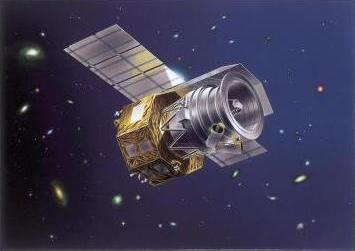Web Opening - AKARI
![]()

An additional survey at 9 and 20 micron will be carried out simultaneously. ASTRO-F is expected to add significant information on many important astrophysical problems (e.g. evolution of galaxies, formation of stars and planets, brown dwarfs and their relation to dark matter). Catalogues of millions of sources are expected to be generated from the survey.
In addition to the survey observations, ASTRO-F will carry out thousands of pointed observations with both the FIS and IRC. Deep imaging as well as spectroscopic observations will be possible, but subject to severe visibility constraints, as well as duplication constraints.
ESA is committed to provide tracking support and assistance with the survey data reduction, in return for 10% of the observing opportunities during the non-survey and post-helium parts of the mission, to be made available to European astronomers.
ASTRO-F is planned to be launched from the ISAS/JAXA Uchinoura Space Center on an M-V rocket by January 2006 at the earliest. The launch date is not yet formally determined.
The Announcement of Opportunities for European astronomers will be published on this web site about half a year before launch, in parallel to that issued by ISAS/JAXA for Japanese and Korean observers. It will be preceded by a Call for Letters of Intent, to be issued with more detailed information this spring.
- Removed a total of (1) style float:left;








































 Sign in
Sign in
 Science & Technology
Science & Technology